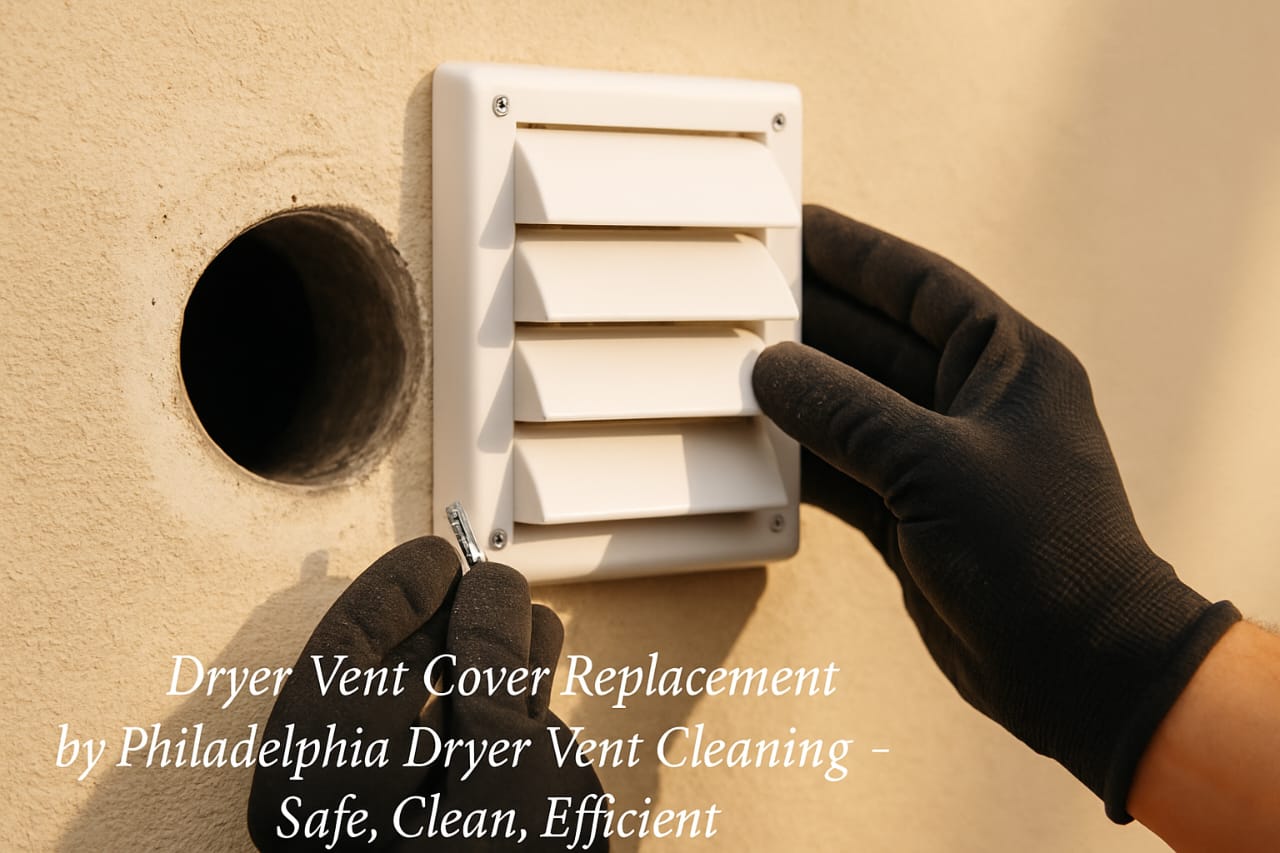If you’ve ever noticed your dryer taking way longer to dry clothes or a spike in your utility bill, you might be surprised to find that a simple fix can help: Dryer Vent Cover Replacement. In the heart of Philadelphia, where the seasons can swing from humid summers to icy winters, having an efficient dryer vent cover isn’t just a nice-to-have—it’s essential. Taking the time to replace a worn or broken vent cover can close the gaps where energy, heat, and even your money escape. Let’s explore why swapping out your old vent cover is one of the smartest moves for reducing energy waste in your Philly home, and why Dryer Vent Cover Replacement is more important than you might think.
Key Features of Dryer Vent Cover Replacement
Before you dive into swapping out that crusty old vent, it helps to know what makes a good dryer vent cover tick. Modern covers aren’t just a flap of plastic—they’re designed with energy-saving in mind. Look for covers that fit snugly to your home’s siding, have a reliable backdraft damper (that’s the piece that opens when your dryer is on and closes up tight when it’s off), and are made from materials that can handle Philly’s unpredictable weather.
Many new vent covers also have pest guards to keep critters and birds from nesting in your vent—this isn’t only a cleanliness thing, but also helps your dryer breathe. If the vent gets blocked, the dryer starts working overtime, chewing through more power and raising your bills. That’s why features like a well-sealed damper and built-in screen are key for professional dryer vent cleaning and maintenance.
| Feature | Old Covers | Modern Covers |
|---|---|---|
| Seal Quality | Gaps, cracks, and loose fit | Snug, weatherproof, airtight |
| Material | Brittle plastic or rusted metal | Durable UV-resistant plastic or stainless steel |
| Backdraft Protection | Basic flap, often stuck open | Spring-loaded or gravity damper, seals tight |
| Pest Guard | None or flimsy mesh | Secure, removable screen or grate |
Dryer Vent Cover Replacement: Why Safety Matters
You might not realize it, but a damaged or missing vent cover can become a real safety concern. Lint, which is super flammable, can get stuck in the vent if the airflow is blocked by a critter’s nest or a broken cover. In fact, clogged dryer vents are a leading cause of house fires in the U.S.—and it’s even riskier in older Philly rowhomes that weren’t built for today’s laundry habits.
A proper vent cover keeps the air moving freely and stops unwanted guests from moving in. It also prevents cold drafts in the winter and hot, humid air in the summer from sneaking inside, which keeps your heating and cooling system from working overtime. So, replacing your vent cover isn’t just about saving pennies; it’s about protecting your home and family.
“Sometimes the smallest fix—like a new vent cover—can make the biggest difference in your home’s safety and efficiency.”
Cost Savings: How a New Vent Cover Lowers Your Bills
We all want to save money, right? Here’s the deal: a tight, well-fitting vent cover means your dryer doesn’t have to work as hard. When your dryer is running efficiently, your clothes dry faster, and you spend less on electricity or gas. Even minor leaks or gaps in an old vent cover let air escape, which means your dryer uses more energy to push out moisture from your clothes.
In Philadelphia, where utility rates can fluctuate seasonally, replacing your vent cover can shave real dollars off your monthly bills. The upfront cost for a new cover (and pro installation, if you want it done right) is often paid back in just a few months through lower energy use. Plus, you’ll extend the lifespan of your dryer, so you’re not shelling out for repairs or a new unit before you have to.
Emergency Service: When a Replacement Can’t Wait
Sometimes you can plan a home project on your schedule, but other times, you need help fast. If you notice your dryer isn’t drying, a sudden draft by the vent, or see signs of animals nesting, it’s time for an emergency dryer vent repair. Ignoring a broken vent cover can lead to bigger headaches like water leaks, pest infestations, or even a house fire.
Local Philadelphia pros are familiar with the unique challenges of old brick homes and can usually swap out a vent cover the same day. Don’t put it off—emergency service can save you from much costlier repairs down the road and ensure your home stays safe and energy efficient.
Frequently Asked Questions
Q. How often should I replace my dryer vent cover?
A. Check it once a year for cracks or damage. Most covers last 3–7 years, depending on weather and material.
Q. Will a new vent cover really lower my energy bill?
A. Yes! If your old cover leaks or lets in outside air, a new, tight-fitting one keeps energy waste to a minimum.
Q. Can I install a dryer vent cover myself?
A. Some handy folks can DIY, but if your vent is tough to reach or you have brick siding, a pro can usually do it quickly and safely.
Q. What’s the best material for a Philadelphia vent cover?
A. Stainless steel and UV-resistant plastic both stand up well to city weather and temperature swings.
Conclusion: Making the Smart Choice for Your Philly Home
If you want your dryer to work better, save money, and keep your home safe, don’t overlook the importance of a working vent cover. With Philadelphia’s mix of old and new homes, and weather that changes with the wind, replacing your dryer vent cover is a simple project that pays off in big ways. Whether you do it yourself or call in a local pro, Dryer Vent Cover Replacement is a small upgrade with major benefits for energy savings and peace of mind.
Read More: Philadelphia Dryer Vent Cleaning


